Juicy beef ribs, infused with the flavors of wood and BBQ sauce, slow-cooked to tender perfection on a wood smoker. The kind of meat that effortlessly slides off the beef rib bone. This is exactly how I always envision my tender-smoked beef ribs recipes to be.
Now, I’m no stranger to the pit. I’ve spent a good chunk of my adult life in cooking school and experimenting with the smoker. I’ve cracked the code when it comes to making these irresistible BBQ beef ribs. I have all the tips up my sleeve on selecting the right beef ribs, prepping them for their smoky journey, picking out the perfect wood, and mastering those smoking techniques.
So, if you’re ready to discover the magic of smoked beef ribs, join me on this flavorful ride. Let’s do this!
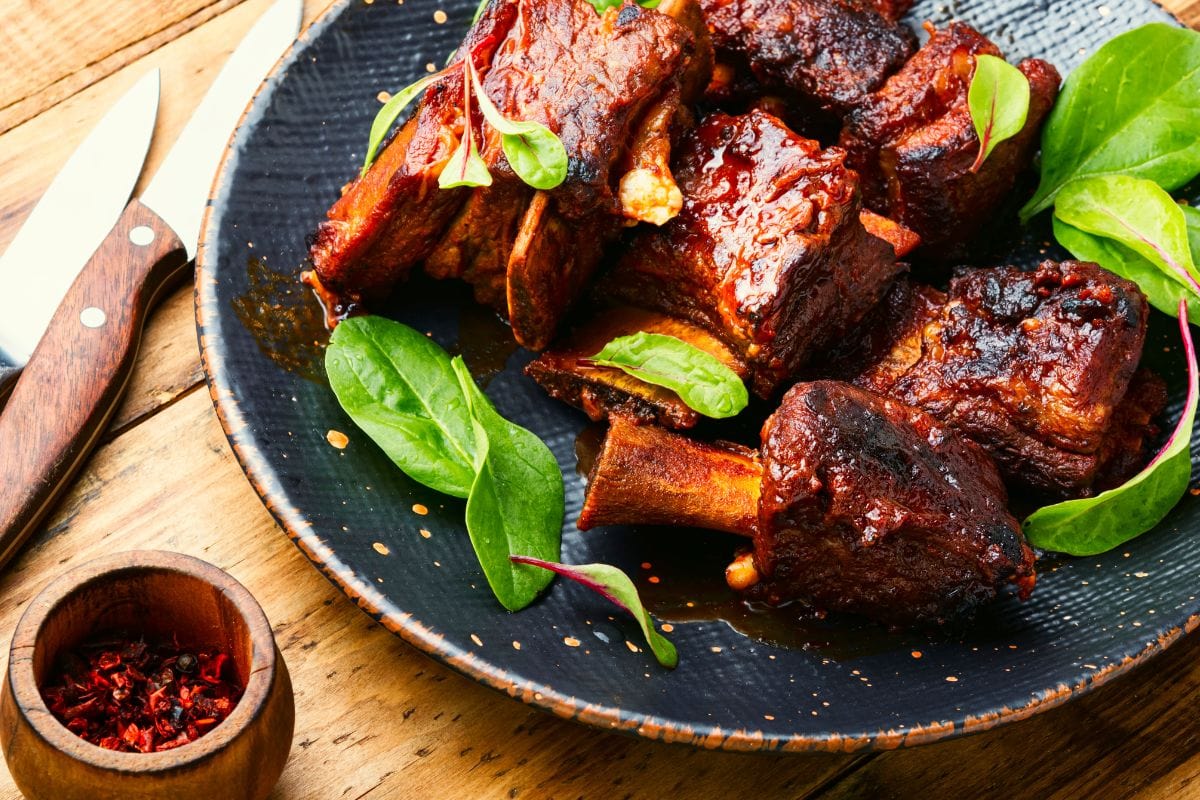
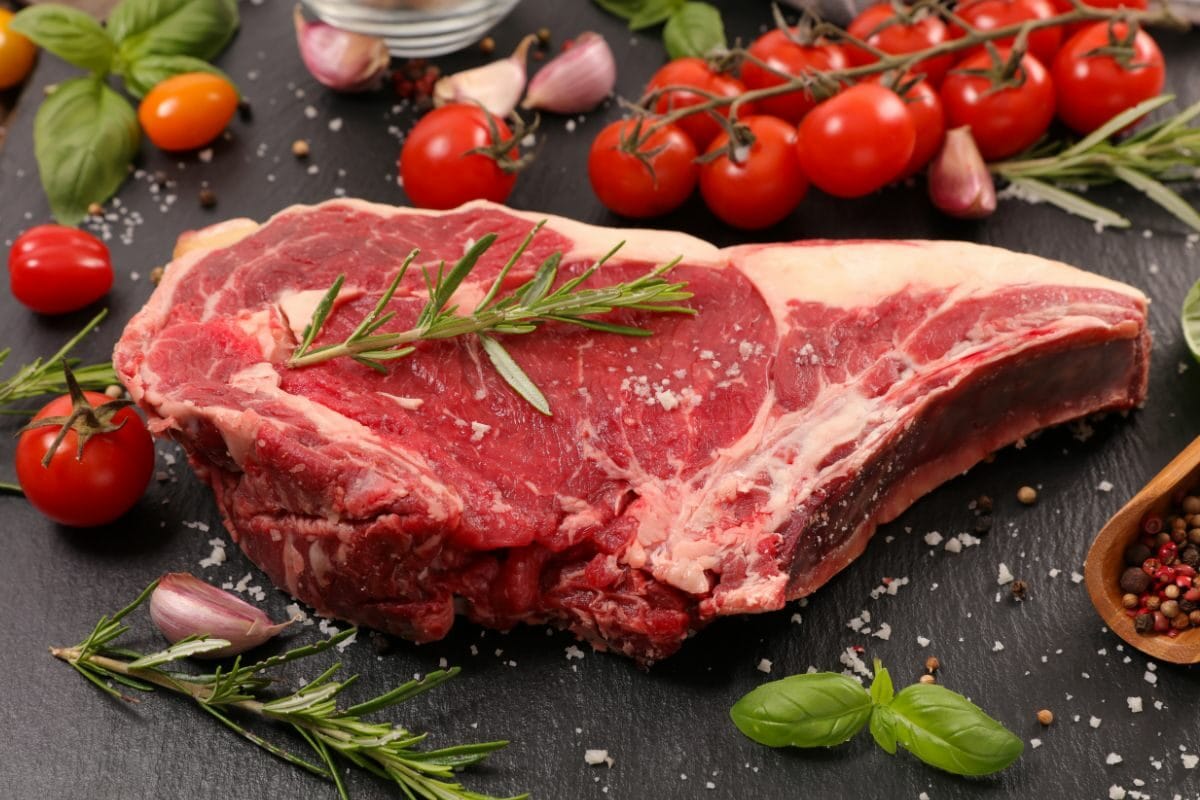
Look for a rack of ribs with plenty of marbling and a nice layer of fat. That’s where all the juiciness and flavor come from!
Don’t be shy to ask your butcher for advice on selecting the best beef ribs.
But when it comes to beef ribs, you’ve got some great options to choose from.
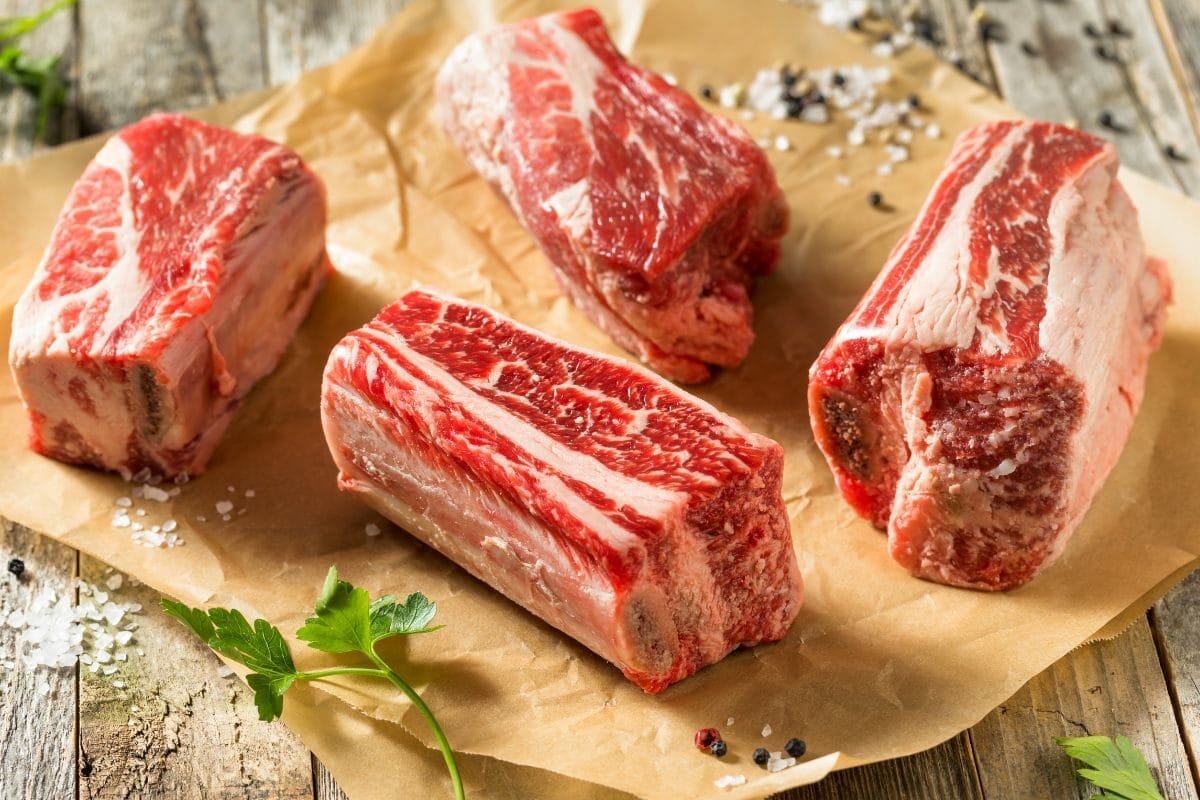
The good news is we’ve got options when it comes to woods for smoking. Hickory, oak, mesquite, apple, cherry—the list goes on. Each wood brings its own unique flavor to the party, so it’s all about personal preference.
Want to go bold and intense? Try hickory. Looking for a slightly sweeter touch? Give apple or cherry a shot. Just remember, quality wood equals quality smoke, so grab the best bag you can find.
You’d need to use wood chips or wood chunks if your smoker is charcoal or gas fueled.
For pellet grills, of course, only wood pellets are allowed. Traeger Grill Signature Blend is a product I trust.
For me, some flavors that work best for BBQ beef ribs are hickory, oak, and mesquite. Whatever wood type it is, make sure it’s hardwood!
Let’s talk about selecting rubs and sauces for our smoked beef ribs.
These flavor-packed spice mixes are the secret to good-tasting BBQ beef ribs. You can go old school with a blend of salt, pepper, garlic powder, and paprika.
You could also get creative and experiment with different herbs, spices, and even a touch of brown sugar for that irresistible caramelization on your beef ribs. Want an all-in-one rub? Then try this Cattlemen's Cowboy Rub.
Mop sauces are thin, basting sauces that add moisture and flavor as you smoke your BBQ beef ribs. These can be vinegar-based, tomato-based, or even beer-based, depending on your taste preferences.
Stubb’s sells one they call Bar-B-Q Baste that is based on vinegar and spices. Apple cider vinegar also works fine as a mop sauce. Use a basting brush or mop to generously apply the sauce during the smoking process. It keeps your beef ribs moist and adds a great punch of flavor.
BBQ sauce is the source of the sweet and tangy taste in your BBQ. Whether you like it smoky, spicy, or sweet, there’s a barbecue sauce out there with your name on it. But you don’t need it in the ribs preparation stage. You’d be brushing it on during the last stages of smoking for a sticky but delicious glaze. You may also use it as a side when serving the dish.
You can go store-bought with a classic sauce like Traeger's 'Que or a brown sugar-flavored product like this Kraft 18oz sauce. You can also whip up your homemade sauce to personalize your rib-tastic experience.
Pro Tip: Keep in mind that you can use rubs, BBQ sauce, and mop sauce in the same recipe if you want to. Combining all on your ribs is like hitting a flavor jackpot. The mop sauce keeps things juicy as the rack of beef ribs smokes away. Then, when you’re nearing the finish line, slather on that barbecue sauce for a tangy, sweet kick. It’s a match made in rib heaven!
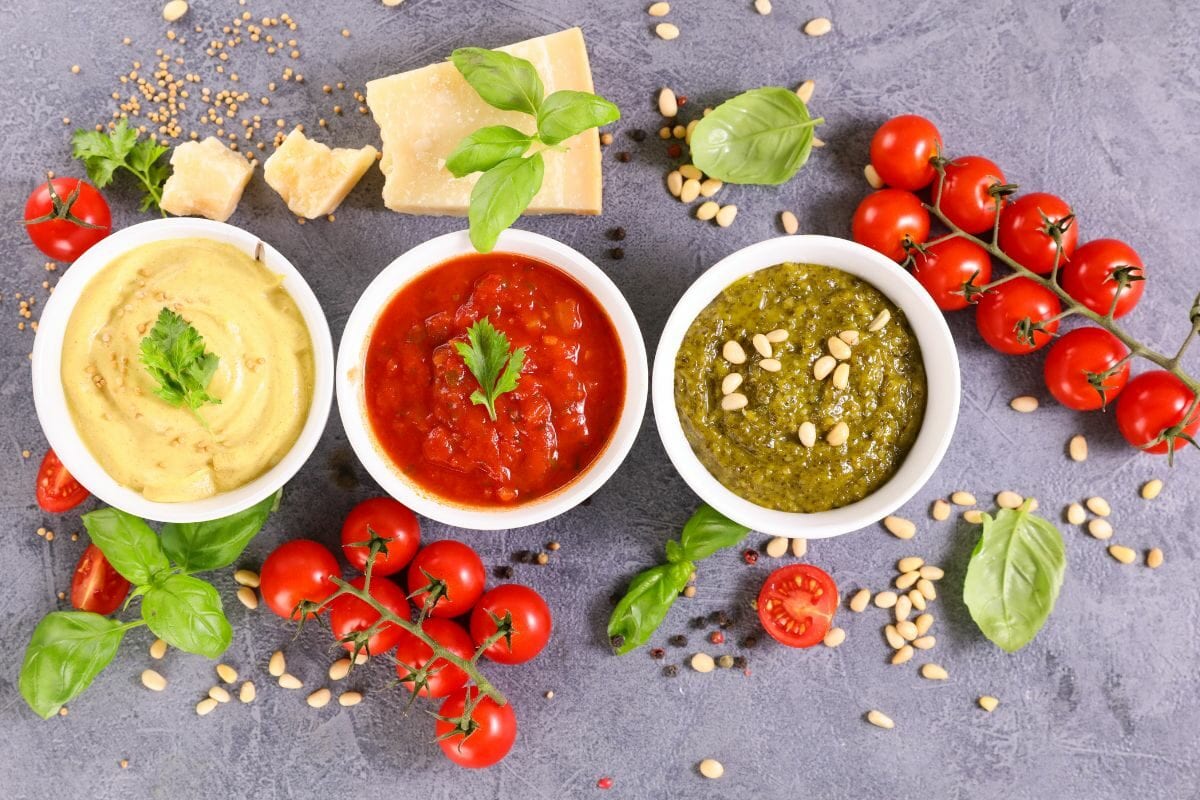
Before you dive into the actual ribs smoking procedure, you need to make sure our smoker is up to the task. Whether it’s a charcoal, gas, or electric one, make sure it can handle the smoking job and keep that heat in check. But I recommend a wood smoker like the Z GRILLS ZPG-450A pellet grill.
And once you have a smoker that can do the job, it’s time to get that smoker ready for the rib-smoking action! Next, I’ll walk you through the steps:
If it’s an old smoker, give it a good cleaning to ensure it’s free from any residue or gunk. Remove any ashes or debris from the previous use.
This helps maintain optimal airflow and prevents any unwanted flavors. Here’s how to clean and prep the smoker for a cooking session:
If you’re using a charcoal smoker, load it up with your favorite charcoal briquettes or lump charcoal. Not sure which to try yet? I suggest you try out Masterbuilt’s charcoal lumps.
When ready, create a well in the center to hold your smoking wood chips or chunks. For a gas smoker, make sure you have enough fuel to sustain the desired cooking temperature.
Fill up the hopper with wood pellets if what you’ve got is a pellet grill. For other smokers, soak your wood chips or chunks in water for about 30 minutes before adding them to create a steady stream of smoky goodness.
Adjust the vents or temperature control knobs on your smoker to achieve the desired cooking temperature. Keep an eye on the thermometer to ensure it stays within the ideal range for smoking beef ribs, typically around 225°F to 250°F (107°C to 121°C).
Related Reading
Allow your smoker to preheat for about 15-20 minutes, giving it time to stabilize at the desired temperature. While it’s heating up, take this opportunity to season your beef ribs with your chosen dry rub or spices.
Now that we have our smoker all set up and ready to roll, it’s time to prepare and season those beef ribs. Here’s how to make sure they’re primed and ready to deliver maximum flavor:
Take a close look at them and trim off any extra fat and silver skin. That silver skin? Yeah, the same one on pork ribs. It’s like a clingy ex that hinders the tenderness and flavor party.
To remove the membrane, grab a sharp butter knife and slide it under the silver skin at one end of the rib. Lift it a bit and use a paper towel or kitchen towel for a better grip.
Now, it’s all about slowly peeling off that stubborn silver skin, working your way along the rib. This little maneuver lets the tasty flavors penetrate the meat evenly, giving you ribs that are tender and melting in the mouth.
For the best tender and flavorful ribs, you can marinate them before applying the rub. So, whip up a marinade using ingredients like soy sauce, Worcestershire sauce, garlic powder, and spices.
Let the ribs soak in the marinade for a few hours or overnight in the refrigerator to enhance the flavor even further.
Grab your store-bought dry rub or a simple blend of spices. Generously coat both sides of the ribs with rub, ensuring you cover every part.
Massage it in, let it cling to the meat, and work its flavorful wonders. Remember, simplicity can be bliss.
If you prefer to let the natural flavors of the beef shine through, you can opt for a minimal seasoning approach. Just sprinkle the ribs with some kosher salt and black pepper to enhance the meat’s natural goodness.
Patience is key now. Let the seasoned ribs sit for at least 30 minutes at room temperature. This gives the flavors a chance to meld and deeply penetrate the meat for an explosion of taste.
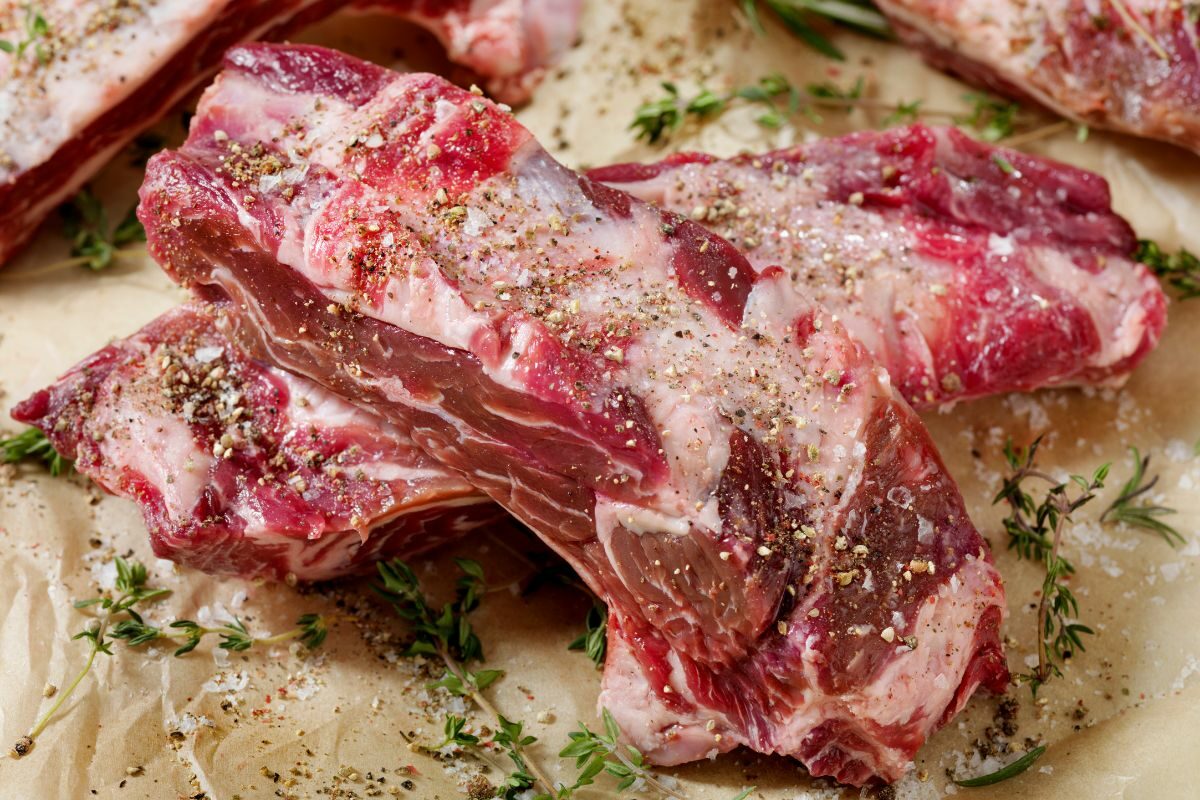
Once you’ve prepared and seasoned your beef ribs to your heart’s content, it’s time to place them on the smoker and let the magic happen. But hey, what smoking technique are you gonna rock? Let’s check out some of my popular smoking techniques:
This is the classic approach that barbecue aficionados swear by. Set your smoker to a low temperature (I always recommend 225°F). Place the ribs bone-side-down in the smoking chamber. Now let those ribs slowly smoke for hours. The low heat and extended cooking time work their wonders. It breaks down the collagen in the meat and transforms it into juicy, fall-off-the-bone goodness. Plan for a smoking time of approximately 5 to 6 hours for this technique.
If you’re looking to speed up the cooking process without sacrificing tenderness, the Texas Crutch is your ticket. Wrap your beef ribs tightly in aluminum foil or butcher paper during the smoking process. Note however that each of these wrapping materials can produce different outcomes. Foil provides a tighter seal. This lets you have moister meat. Meanwhile butcher paper allows for some airflow, creating a slightly drier bark.
If you opt for the Texas Crutch technique to speed things up, expect a shorter smoking time. When you wrap beef ribs in foil or butcher paper, you help accelerate the cooking process. Generally, smoking with the Texas Crutch takes me around 5 to 6 hours.
I like to try the 3-2-1 when I’m after ribs with a perfect balance of tenderness and caramelization. It involves three stages of cooking: smoking uncovered for three hours, wrapping in foil with some basting liquid (like apple juice or beer) for two hours, and then unwrapping and smoking again for the final hour. The 3-2-1 method yields ribs that are moist, flavorful, and boast a delightful bark.
Related Reading
Want to take a bolder, faster route? The hot and fast technique might be your jam. Crank up the heat on your smoker to 275°F to 300°F and cook those ribs for a shorter time. At 275 degrees, you’re looking at 3 to 5 hours of smoking.
Don’t worry, you don’t need a grill. Most smokers can easily get to this temperature, except for some electric smokers which typically only go up to 270 degrees max. However, it’s important to note that smoking ribs hot and fast can result in a slightly different texture compared to the traditional low and slow methods. The ribs may have a slightly firmer bite and a different crust development. But hey, variety is the spice of life, right?
To make the best smoked beef ribs, monitor and maintain the temperature throughout the smoking process. Keep an eye on your smoker’s thermometer and make adjustments as needed to maintain a consistent temperature.
Talking about temperatures too, always monitor the internal temperature of the BBQ beef ribs with a meat thermometer. Once it reads 145 degrees, the minimum internal temperature the USDA recommends for safety, you may stop smoking now. An instant-read thermometer that reads the internal temperature instantly like the Alpha Grillers thermometer work perfectly for this.
While 145 degrees is considered the safe cooking temp for BBQ beef ribs, achieving tenderness requires a higher temperature. For optimal tenderness, continue smoking the ribs until they reach an internal temperature of around 200 degrees Fahrenheit.
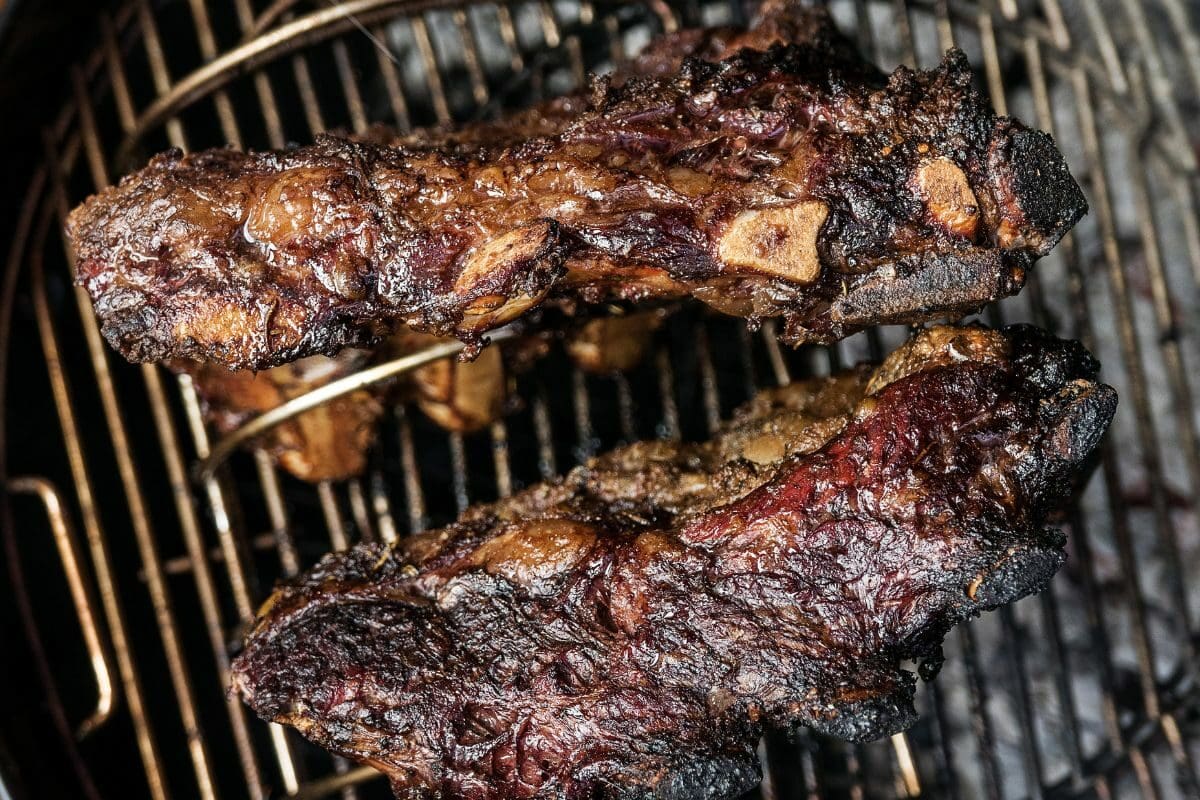
Once your smoked beef ribs are ready, don’t rush into serving the smoked meat right away. Allow the smoked beef to rest for about 10 to 15 minutes before slicing into them. This resting period helps the juices redistribute throughout the meat, resulting in a more succulent and flavorful bite. When it’s time to serve, slice the BBQ beef ribs between the bones. Pair them with your favorite barbecue sauce, coleslaw, or cornbread for a complete and satisfying meal.
Congratulations on embarking on this journey to become a master of smoked beef ribs with me! You’ve learned the secrets to selecting the perfect ribs, preparing them with care, setting up your smoker, and infusing them with irresistible flavors. Whether you choose beef back ribs, short ribs, or chuck ribs, you now have the power to transform each type into a culinary masterpiece. So, go for it!